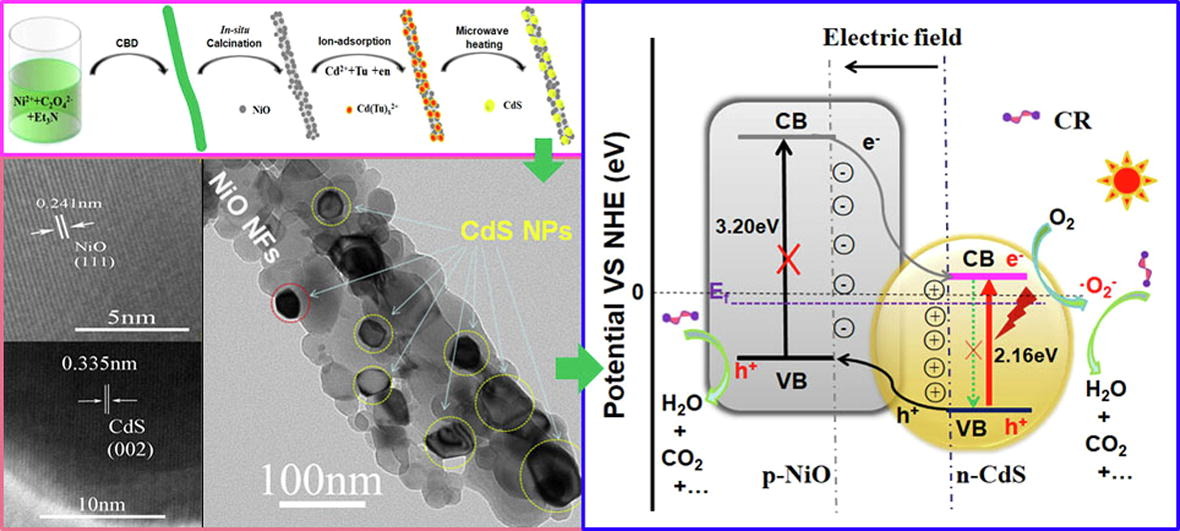Deng, C.H., Hu, H. M., Yu, H., Ci, M. Y., Wang, M., Le, H. "1D hierarchical CdS NPs/NiO NFs heterostructures with synergistic enhanced photocatalytic activity under visible light". Advanced Powder Technology, accepted June 2020. https://doi.org/10.1016/j.apt.2020.06.003
Abstract
One-dimensional (1D) hierarchically structured CdS nanoparticles (NPs)/NiO nanofibers (NFs) heterostructures with remarkable removal efficiency for diazo dye Congo red (CR) were fabricated by a stepwise synthesis process, which was involved a chemical bathing deposition combined with calcination, and a microwave-assisted wet chemical reaction. The crystal phases, morphologies, optical absorption properties, and adsorption/photocatalytic activity of as-prepared products were investigated by XRD, FESEM, TEM, high-resolution TEM (HRTEM), N2adsorption/desorption isotherms, UV–Vis diffuse reflectance spectroscopy (DRS) and photoluminescence (PL) spectrum respectively. The experimental results indicated that binary satellite- core CdS NPs/NiO NFs heterojunctions are comprised of n-type CdS NPs with size of 10–30 nm decorated onto 1D p-type NiO NFs with diameter of 60–180 nm and length up to microns, which are self-assembled by nanoparticles with 30–100 nm in size. The possible formation mechanism for satellite-core structured CdS/NiO heterojunction is proposed. Interestingly, the decolorization efficiency over CdS/NiO heterostructures reached up to 91.2% in removal of aqueous CR at high concentration within 40 min under visible light irradiation, which was approximately 5.2 and 3.8 times as high as that of pure CdS nanocrystals (NCs) and the mixture of NiO NFs and CdS NCs. Furthermore, the possible photocatalytic mechanism was also investigated. The as-designed hybrid CdS NPs/NiO NFs heterostructures exhibited improved photocatalytic activity, which is attributed to the enhancement of the visible light adsorption, the efficient separation of photogenerated electrons and holes, and the high adsorption capacity towards CR molecules, thereby displaying superior visible- light-driven photodegradation of CR in high concentration. This work may provide a green engineering heterojunction technology to develop the advanced multifunctional nanocomposites for their applications in wastewater purification.
